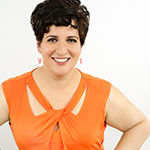No Records Found
Sorry, no records were found. Please adjust your search criteria and try again.
Google Map Not Loaded
Sorry, unable to load Google Maps API.
- Jessica
- Abawag
- Teletherapy in California
Fresno
California
93721
United States - Fluens Children's Therapy

Fresno
California
93721
United States
I prefer to take a holistic approach when treating children with CAS. This includes involving families in the treatment plan for both parent collaboration and carryover at home. Targeting the child's communication during his daily routines is important to know how to best support his needs, so we discuss the social-emotional impact his speech difficulties have on building relationships, as well as how these deficits impact the family dynamic. Using this information helps to prepare a treatment plan that is both functional and individualized. Meeting the child at her current skill level and tailoring a program around that will help to ease any frustration and negative behaviors that may be occurring because of the communication difficulties. This could include incorporating AAC and/or compensatory strategies to help the child get his message across to others. During therapy sessions, a multi-sensory approach is utilized to support the child's motor speech needs, including visual and tactile prompts as necessary. My goal is to move toward independence and generalization as soon as the child has gained the skill and confidence to use the targeted motor patterns and phoneme links. Depending on the age of the child, play-based therapy is utilized to enhance motivation and development of play skills. Sensory and motor activities are incorporated into the therapy sessions as a way to prime the motor system, as well as support attention and engagement. Positioning needs are taken into consideration to ensure the maximum support is provided motorically to produce speech. Goals are reviewed on a regular basis to determine any need for shifts in prompting level or targeted phonemes/words/phrases. Periodic check-ins with family are conducted to monitor carryover and generalization of skills outside of therapy sessions, as well as to support any additional communication or social-pragmatic needs. Referrals to other professionals are made as necessary, and collaboration with other therapists is also offered as an option to support the child's progress.
Parents are encouraged to be involved in the therapy process from the beginning. A comprehensive case history is conducted with the parents to better understand the child and family's needs. They are invited to participate in therapy sessions as appropriate. If parents' presence in the session is distracting to the child, then parents are asked to come in either once a month or for the last few minutes of the session to discuss progress and coach them on any new techniques that can be used at home for carryover. While home programming is encouraged, it should not be an additional stressor on the family, so a discussion is had regarding how that practice can fit into their daily routines to support generalization. Parents are strongly encouraged to ask questions and bring concerns to the therapist, as well as to share their observations of the child in his daily routines at home and school to better tailor target words and phrases to those that are most functional for the child.
Depending on the needs and severity of the child, I have used AAC to support their overall communication needs by providing visual supports and alternative options for expressing their desires. This has ranged from low tech systems, such as visual icons or PECS, to high tech systems like GoTalk, ProloQuo2Go, and Dynavox. The type of AAC system used was determined by assessing their overall motor impairments as well as the level their expressive language was impacted. Discussing the various systems with families was also important to determine how much they were able to carryover to the home setting (e.g. were they able to purchase or secure an iPad or take pictures of items/locations around the house to update a communication book). Consulting with an AAC specialist and other relevant professionals (e.g. occupational therapist, physical therapist, vision specialist) is frequently needed in order to determine the best system for the child and family to use. As therapy progressed and the child's speech improved, it was important to reassess the need and level of support of the AAC system, keeping in mind that speech is the fastest way to communicate with others in order to form meaningful relationships. If the child or family was not using the system outside of therapy sessions, a conversation was initiated with the family to discuss the barriers and problem solve other ways to support the child's communication, especially if frustration and/or negative behaviors were resulting because of the child's inability to effectively communicate with others.




